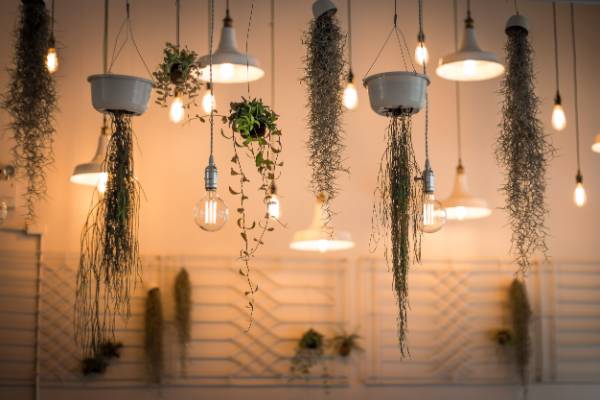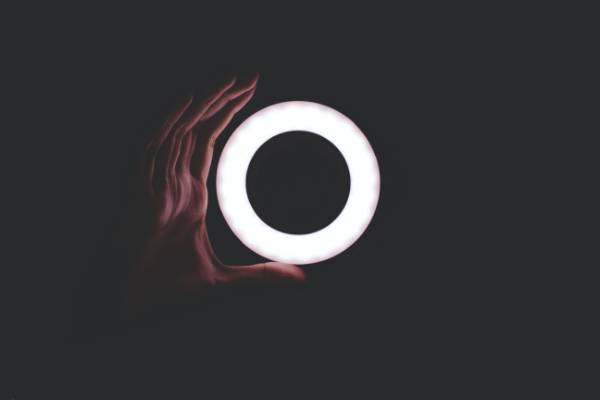You rely on a device called a ballast if you install linear LED lighting that is plug-and-play, fluorescent, HID, or both in your buildings.
A cost-effective lighting solution that is energy-efficient. It gives you sophisticated controls over the amount of light produced in your space is possible when the appropriate ballasts are used. Let’s dig a little deeper.
Lighting Ballasts
Simply put, a fluorescent light fixture’s ballast is its heart, pumping energy (like blood) through the lamp. The correct voltage is supplied to the lamps by a ballast, which also controls the amount of current that flows to them once they are turned on.
An arc must form between the lamp’s two electrodes in order to ignite a fluorescent bulb. The right amount of voltage and an electrical current is quickly supplied by the ballast to strike the arc, which causes it to form.
It immediately restricts the voltage and current to just what is required to maintain steady light output. Without this control, the current drawn by a fluorescent tube that is powered directly by a high voltage power source would increase uncontrollably.
The lamp would quickly burn out as a result of this overheating. The number of lamps of a particular type and voltage that ballast can support depends on the lamp type. This indicates that not all ballasts work with all fluorescent lamps.

Types Of Ballasts
Magnetic and electronic ballasts for fluorescent lighting are available. Magnetic ballasts are an older technology that typically has either a preheat start or a rapid start method.
These ballasts are typically less expensive than others, but they have a propensity to flicker and hum 120 times per second. Prior to the ballast supplying the voltage to start the lamp, the preheat and rapid start methods heat the cathodes of the lamp.
Electronic ballasts are more energy-efficient and operate fairly quietly compared to magnetic ballasts, which eliminates flicker. A rapid start, instant start, or programmed start method can be used with this kind of ballast.
The fastest ballasts to turn on the lights are instant start ballasts. They are made to turn on or off for longer cycles, though. In the long run, frequently turning them on and off can reduce lamp life.
Because they instantly start the lamp by passing 600 volts through it to jump-start the cathodes, they are known as instant start lamps.
Though slower to start than instant start ballasts when used with more frequent on-off cycles, programmed start ballasts, also known as programmed rapid start ballasts, don’t have the same negative effects.
This kind of ballast essentially functions as a smart rapid start ballast. This kind of lamp ballast detects the cathode temperature and only applies the necessary amount of power to light them.
These ballasts are more energy-efficient than other ballasts because it takes more power to ignite cold cathodes.
They are made for spaces with frequent on/off cycles, like stairwells, hallways, or bathrooms with occupancy/vacancy sensors.
How Do Light Ballasts Work
Consider a light ballast as a two-job component to understand how it functions simply as one of several in-fixture lighting connectors.
Once the light is lit, it reduces the initial high current flow to a more subdued level after providing a boost when we want to arc the light and turn it on.
In some ways, its operation is comparable to how a car’s engine operates during ignition and subsequent idling.
The ballast’s primary responsibility is to make sure there is enough voltage available when turning on the luminaire so that it can initially start burning.
Allowing the mains voltage to provide this initial “boost” right after the user flips a switch allows enough current to jump across and complete an arc between the two electrodes in the lamp, providing light.
The lamp itself won’t continue to draw the full available voltage from the mains power the entire time it’s in use because a ballast regulates current after this switch-on phase, which is another crucial task.
While different types of bulbs need an initial surge of electrical current to turn on successfully, allowing them to continue drawing this amount of power from the wall for an extended period of time would cause serious damage due to their rapid overheating.
Without a ballast integrated into the circuitry, the result would be a bulb that, at worst, would have a significantly shorter lifespan or would burn out or shatter almost instantly.
Need A Ballast For Led Lighting?
LED lamps are typically chosen for their superior quality and consistency of light output as well as their excellent economy when it comes to long-term running costs, whether they are being used in industrial applications, as grow lights, around the home, or anywhere else.
They are currently a particularly well-liked choice for use in setups for display lighting and downlights.
The cost of the lamps themselves is frequently higher than for many other types of lighting, but this is typically quickly offset by their significantly higher operating efficiency.
LED lights don’t necessarily need a ballast because of their low power consumption, but if you want to replace your current fluorescent or HID lamps with LED versions to benefit from their advantages, you’ll probably want to put the LED lights right into the fixtures you already have.
The simplest option in that situation is typically a “plug-and-play” format.
However, some compatible LED varieties are created to work with the current ballast technologies found in the majority of fluorescent or HID fittings. Technically, LEDs use a similar but different piece of circuitry called a driver instead of ballast.
All ballasts will eventually break down, and eventually, you’ll need to replace an LED lighting ballast for lamps that don’t actually need one.
However, a non-ballast compatible LED lamp wouldn’t function at all until the ballast was completely removed and the proper driver system was wired in, which typically required rearranging or replacing the existing fixture.
Even though plug-and-play LED systems are frequently more expensive, upgrading or replacing the entire fixture will still be less expensive than the slightly higher cost of the lamps.
Other options include hybrid or linear LEDs, which can be line-wired to mains voltage or equipped with a driver after an existing ballast fails and ceases to function.
Since the sockets will carry live mains voltage if the ballast is bypassed, installing non-ballast-compatible LED lamps and the necessary hardwiring can be extremely dangerous for anyone who is not a licensed electrician.
Therefore, it is typically much simpler to choose the slightly more expensive ballast-compatible LED lamps for a retrofit job.
Then just keep replacing ballasts as needed, and when it comes time to upgrade your system, enjoy the simplicity and security of a direct like-for-like lamp swap.
When Should I Replace My Ballast
Although replacement isn’t frequently required, it’s typical to notice some performance decline in a fixture’s ballast after about three years.
As a result, the lamps go from having minor problems maintaining full light output to totally failing to light as they tend to fail gradually. Knowing the symptoms of failure is crucial because all ballasts eventually fail.
It might be time to service your fixture if your lights appear to be dim, buzzing, flickering quickly, or changing color.
